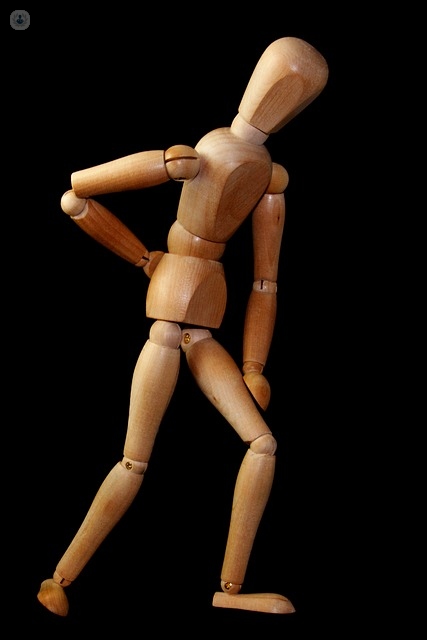Minimally invasive treatments for a slipped disc (herniated disc)
Written in association with:A slipped disc, or herniated disc, is one of the most common spinal injuries in patients under 45 years of age. The often sharp pain it produces is frequently concentrated on one side of the body, and hampers daily activity.
This usually manifests as back pain or neck pain, but if the slipped disc causes pressure on the sciatic nerve, it can cause pain in the lower body (this condition is known as sciatica).

What's the future of medicine for slipped discs?
According to Dr Jaume Soler Subirats, an expert in using minimally invasive surgery and ozone therapy to treat slipped discs, the greatest evolution in medicine in the next 10 years will be in the rational use of drugs and treatment that are specific to each case.
Minimally invasive treatment
In the case of pain and degenerative diseases such as osteoarthritis, the techniques that will be used will be the minimally invasive ones applying more natural principles like ozone therapy, the Orthokine® method and platelet-derived growth factors.
What's involved in minimally invasive surgery for slipped discs?
The pain produced by herniated disc protrusions and sciatica can be treated with minimally invasive surgery as an outpatient, with the patient discharged within 24 hours of the operation.
It's based on a triple therapy that avoids the risks of open surgery and general surgery. The use of percutaneous techniques - those that are applied through the skin - don't interfere with, or modify the normal anatomy of the spine.
Another advantage of this therapy is that the stitches are done directly on the slipped disc, which prevents damage to the bone and reduces the epidural scar.
Results indicate that minimally invasive surgery resolves 80 per cent of the cases of back pain, neck pain and sciatica derived from hernias or disc protrusions.
Read more: recovering from a slipped disc

Is ozone therapy an effective rheumatic treatment?
Ozone therapy is a treatment that originated in Germany and has been used for more than 40 years in different medical settings. It involves the application of ozone to the patient to treat various conditions.
Its main benefits are:
- to stimulate the white blood cells and, therefore, to increase the body’s natural defences;
- the detection of mutated cells that can cause cancer or autoimmune diseases, and;
- to increase oxygen release in red blood cells.
It also acts as a germicide, eliminating fungi, bacteria and viruses.
This technique can be applied to slipped discs (including lumbar and cervical herniated discs), and as a treatment for problems of arthrosis and localised pains. In these cases, ozone injected into the paravertebral muscles neutralises the toxic products that cause a ruptured disc, producing inflammation of the nerve. If injected into the disc, it reduces the volume of the herniated material.
What is Orthokine® for joint and back pain?
Orthokine® therapy was born in the late 90's and is also known as 'sports therapy', as many athletes have benefited from it for its rapid and effective results. It's had highly positive results for knee arthritis and spinal conditions, such as a slipped disc.
This technique involves injecting the affected area of the patient with proteins and growth factors obtained from the patient’s own blood. The blood is drawn with syringes, incubated and centrifuged, to give rise to a blood serum that will be reinjected into the joint.
If you think you might need minimally invasive treatments for a slipped disc or other spinal problem, consult your doctor or a Top Doctors specialist.


